Read next
The latest news, updates and expert views for ambitious, high-achieving and purpose-driven homeowners and property entrepreneurs.

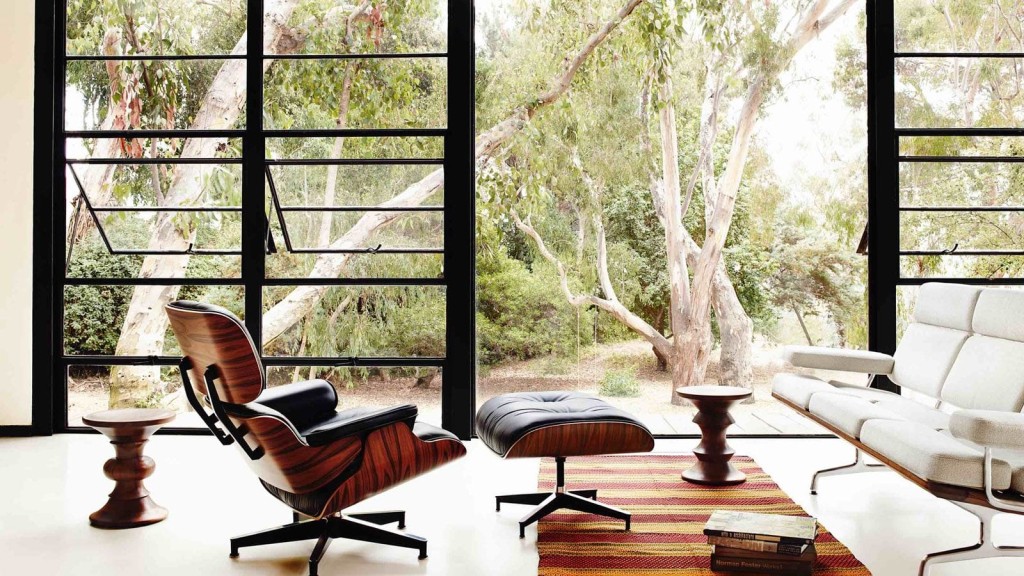
The decades after World War II saw an enormous building boom in the UK as the country got back on its feet.
With an expanding population and increased demands for hygiene and convenience, not only were millions of new homes built, but many of them were radically different from what had been before. Windows were bigger, ceilings sometimes lower and everything was meant to be clean and rational, light and airy.
By the 1980s, though, there was a backlash against the supposedly unfriendly and antiseptic places built in the 1950s, ‘60s and ‘70s. And then there was the backlash against the backlash, and a hugely successful business – estate agents The Modern House – was founded just to sell these homes.
Now more people than ever value the houses and flats and renovating a midcentury modern home is either a path to profit or a way of shaping your dream home. In this article, we’ll share our modern design ideas for making the most of your midcentury house or apartment.
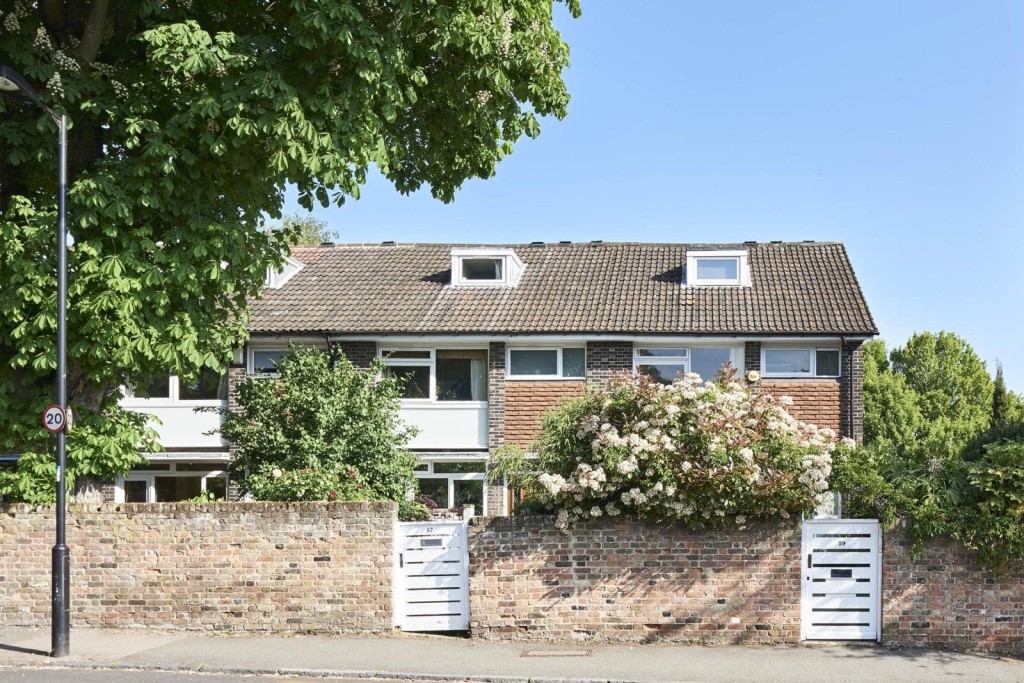
Strictly speaking, a midcentury home could be any house or flat built between 1940 and 1980.
But when people talk about midcentury homes, that’s usually shorthand for “midcentury modern” or “midcentury modernist”. So we’re not talking houses that might have been built in 1968 but were designed to look and feel like Victorian cottages – we’re talking places that were late 20th century and proud of it.
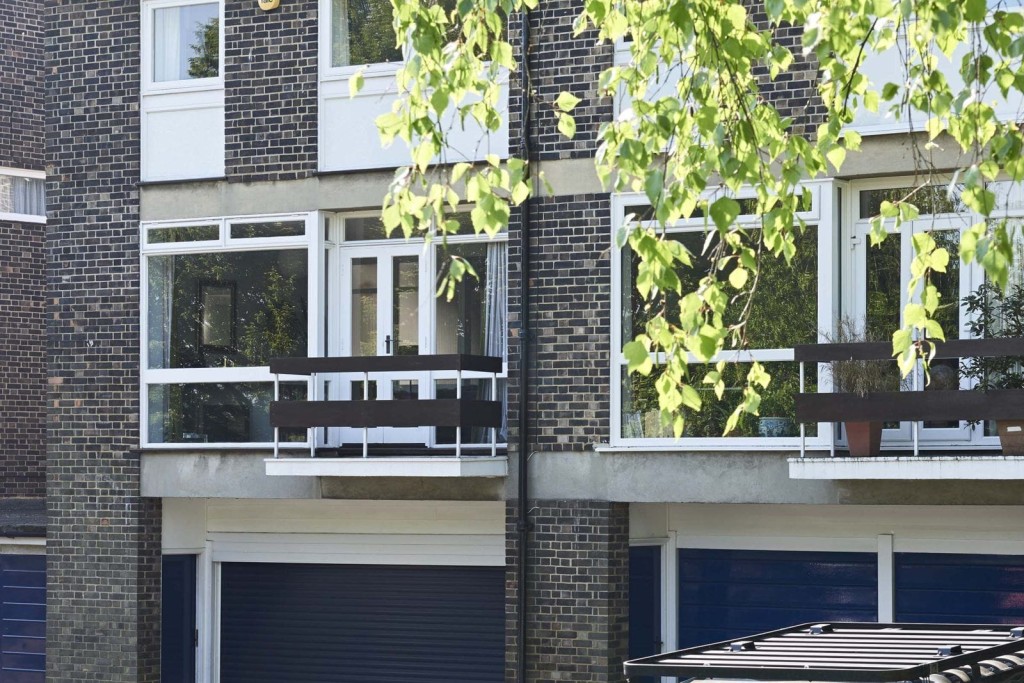
That said, we’re also talking about a wide range of different types of homes. For instance, pioneering modernist architecture is associated with flat roofs. But most of the houses built by developers in the UK in the 1950s, 1960s and 1970s had pitched roofs. But in their other details, these are often exemplary modern houses – with, for example – floor-to-ceiling, wall-to-wall windows and doors leading out to the garden.
Other characteristics of midcentury homes are that everything has been designed to sit lower than in a Victorian house, with windowsills also lower, to maximise light. And despite many of their critics assuming that they are very boxlike and simplified, midcentury modern houses and flats sometimes have lots of levels: sunken living rooms, split-level open-plan rooms and mezzanine galleries are all features you will come across. Think of one of the great fictional midcentury spaces: Don Draper’s New York apartment in Mad Men.

In fact, just as Mad Men had a huge influence on menswear in the 2010s, the show has served as a handy guide for people taking on the task of renovating midcentury modern homes. As well as Don and Megan’s ultra-chic pad, there’s lots to learn from the original elegantly spare Sterling Cooper offices and the groovier later Sterling Cooper Draper Pryce HQ. Plus, there are the many other inspirational locations, including Pete and Trudy’s suburban home and Megan’s LA hangout.
Mad Men is far from the only time midcentury houses have starred on screen. A Single Man – the acclaimed 2009 film directed by fashion designer Tom Ford – features some beautiful midcentury houses. And you could check out Columbus, another movie the critics love, in which the characters walk around and sometimes discuss the architecture of Columbus, Indiana, which has one of the finest collections of modernist buildings in the US.
Closer to home, there was Breaking and Entering, whose main character – played by Jude Law – is an architect in King’s Cross and much of the action takes place in the Grade II*-listed Alexandra and Ainsworth Estate, built in the 1970s. (You might also recognise it from Kingsman: The Secret Service or many, many pop videos over the years, from Kirsty MacColl to Dua Lipa.)
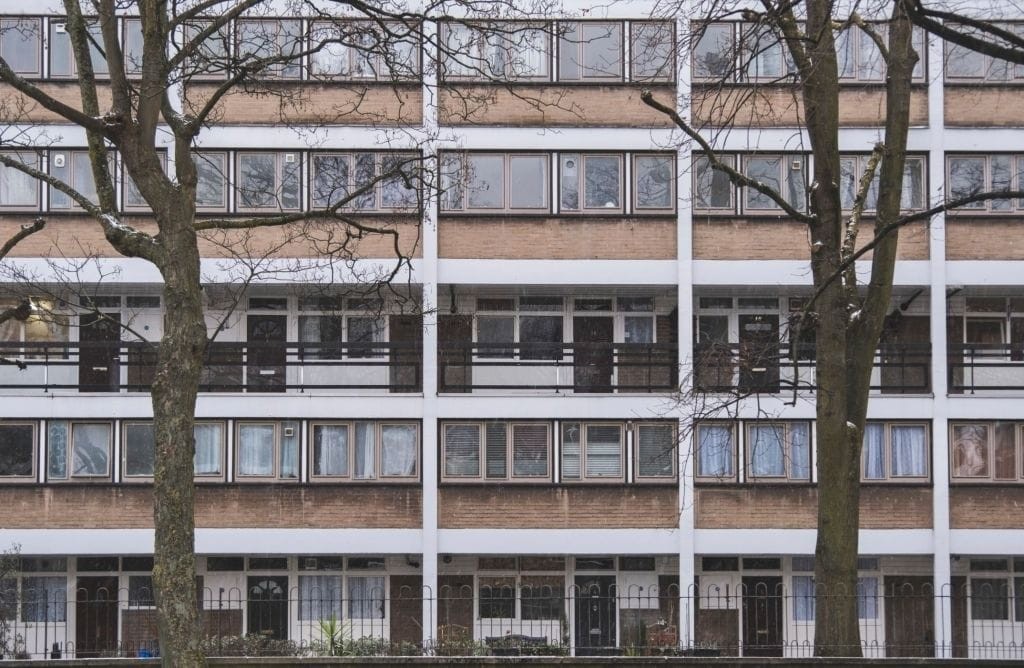
In some parts of the UK, anything that looks clearly postwar is assumed to be social housing.
But, especially in London, there were huge swathes of private development during this time. Think of the smart apartment blocks of St John’s Wood, the townhouses of Swiss Cottage or the 1,500-acre Dulwich Estate with thousands of houses as well as a number of blocks of flats. If you like this kind of architecture, Blackheath is also worth having a walk around.
And there were major new places to live – the New Towns – built during this time, where everything was midcentury.
Of course, there was also an impressive amount of council housing built during this time, too. There used to be an assumption – which some politicians seem determined to perpetuate – that much of this housing was poorly designed and shoddily built. Some of it was, of course, but much of it was the work of excellent architects and has stood the test of time.
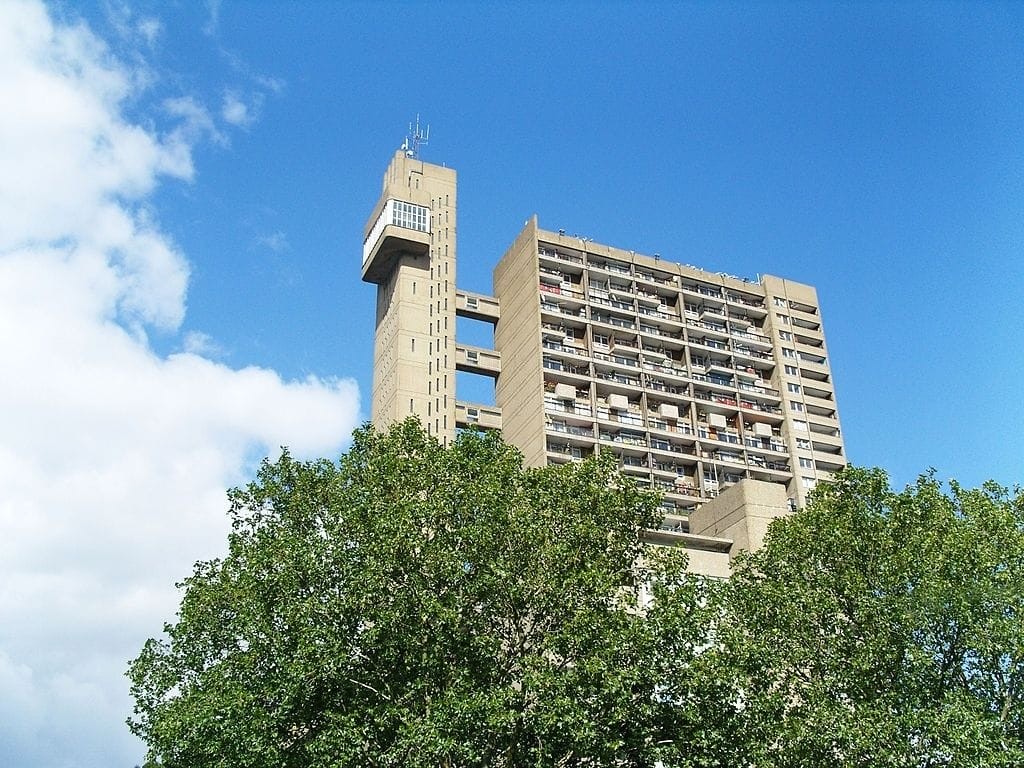
This has been recognised by the listing of estates designed by architects such as Maxwell Fry and Neave Brown. Buildings like Trellick Tower in west London, and its sister building Balfron Tower in east London, and Dawson’s Heights in south London have become landmarks that help define parts of the capital.
Maybe the most famous of all the modernist housing in London falls between the two categories: Chamberlin, Powell and Bon’s Barbican Estate was built by a local government – the Corporation of London – but for private tenants (who later became private owners).
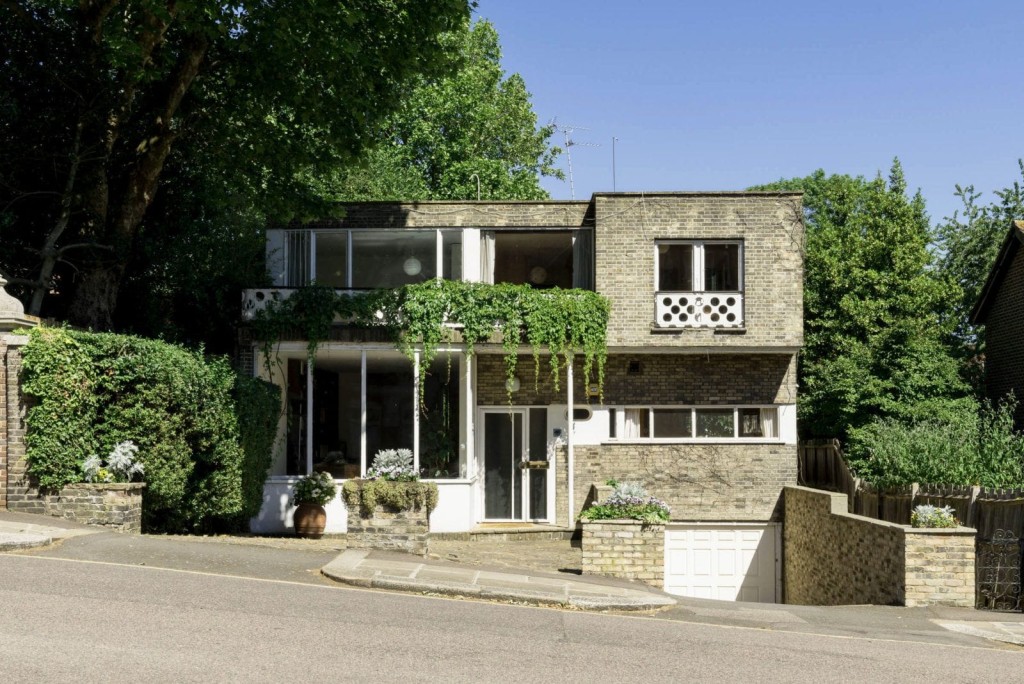
Although by British standards, homes from the postwar era are still regarded by many people as pretty much new builds, these buildings are between 40 and 75 years old. That means that many of them need some care and attention.
It’s also one of the great ironies that around the same time people were calling for greater protection of Victorian and earlier houses and paying serious money for those homes if they had original features, the careful details architects had included in modernist houses and flats were getting stripped out and binned.
Of course, you have the right to do what you want to the interior of a freehold house you own (at least, as long as it’s not listed). But fans of different architectural styles are always distressed to see buildings of the type they love having their character trashed. In the case of midcentury homes, that meant seeing the rooms cluttered up as well as being subjected to all sorts of strange additions… including fake cottage-style wooden beams.
So the first part of renovating a midcentury home with modern design is often getting rid of the accumulated extras that have been put in – often stray bits of cod-Victorian decoration.
For instance, coving aimed at softening what should be the unadorned join between walls and ceilings. Internal and external doors are another way faux-19th-century elements crept in. If, for instance, you’ve bought an ex-local authority property, it’s likely that the first thing the initial right-to-buy owner did was replace the plain front door with something ornate as a way to set them apart from their neighbours.
A word of caution about doors: if you own a purpose-built flat – whether it’s in a private, housing association or council block – check whether you or the freeholder has the responsibility for front doors. Otherwise, you can end up buying a door and then having to pay for its replacement.
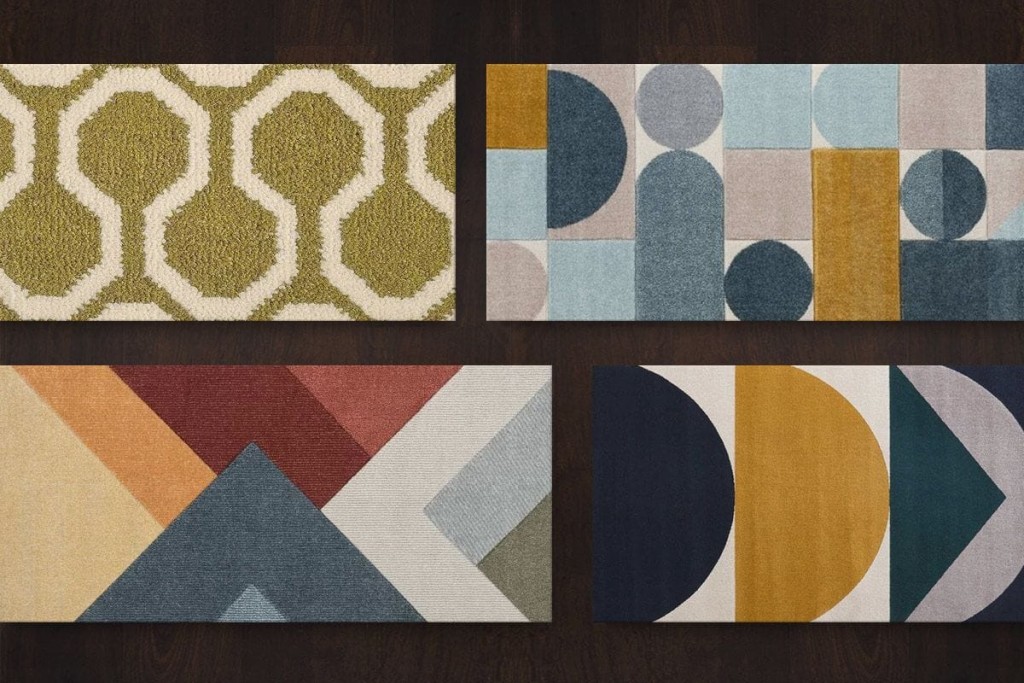
Many modernist houses in Britain came with beautiful parquet floors in the living rooms. If you find an unrestored example of these homes, you will often find that these stunning floors have spent decades hidden under carpeting. Strip away those carpets and you’ll find the key element that everything else in your room will fit around.
Of course, you don’t have to leave the whole floor exposed – rugs are fine. We’d tend to go for thin rugs in geometric or Festival of Britain (see below) patterns. That is, unless you are aiming for an early 1970s mood, in which case very woolly rugs in single colours are the way to go. Many recent renovations favour Persian-style rugs, which can work well against the parquet floors.
The floors are just one of the high-quality wood elements that hopefully will have survived in your home. Another you will frequently find are dark-wood bannisters. Make sure you have these looked after by craftspeople who know what they are doing, and won’t brutally assault them with sandpaper.
If you want to know what the original intended interiors of these homes were, there’s no shortage of photos and illustrations available. Of course, you are not restricted to copying what went before – this is your home! – but if you are looking for an initial spark of inspiration, you can pick up great ideas about what kind of furniture and wall coverings will go well with the architecture.
And if there are photos or brochures of your particular development, you might be able to see what original features have been lost and decide whether to try to recreate them.
Talking to your neighbours can help – you might find people who lived in these houses or flats from the start or at least in their early days who can share family photos with you so you can see how the real versions of these homes (as opposed to the catalogue version) looked back then.
Of course, what was state-of-the-art in 1961 may not be just right in 2021. So unless you are treating this as a strict historical restoration project, there are changes you might want to make.
A common drawback with midcentury homes is that the kitchens are… cramped, let’s say. So you might want to think about either an extension that will let you have a bigger kitchen. Or, if that’s not possible, opening the kitchen out into the living room is a popular move that will normally look right, too.
Bathrooms, too, can be on the small side, so you might think about rearranging the balance of space.
There are often a number of options for extending the house: rear extensions are popular, obviously. But because midcentury houses are often laid out in estates rather than on traditional streets, front extensions are more likely to come into play than with Victorian houses.
One option open to postwar houses you don’t have with 19th or early 20th-century homes is the permitted development right for upward extensions. We’d suggest caution about this route – it can be complicated to get approval and the building work is likely to be very expensive. But one or two councils welcome it, especially with flat-roofed houses.
There is sometimes another way to increase the amount of liveable space in your home without building beyond your current walls: a considerable number of houses from this time have built-in garages. If this hasn’t been done already, you can usually convert your garage into rooms, although you might (annoyingly) have to leave the garage door looking like a garage door, rather than being able to put windows in.
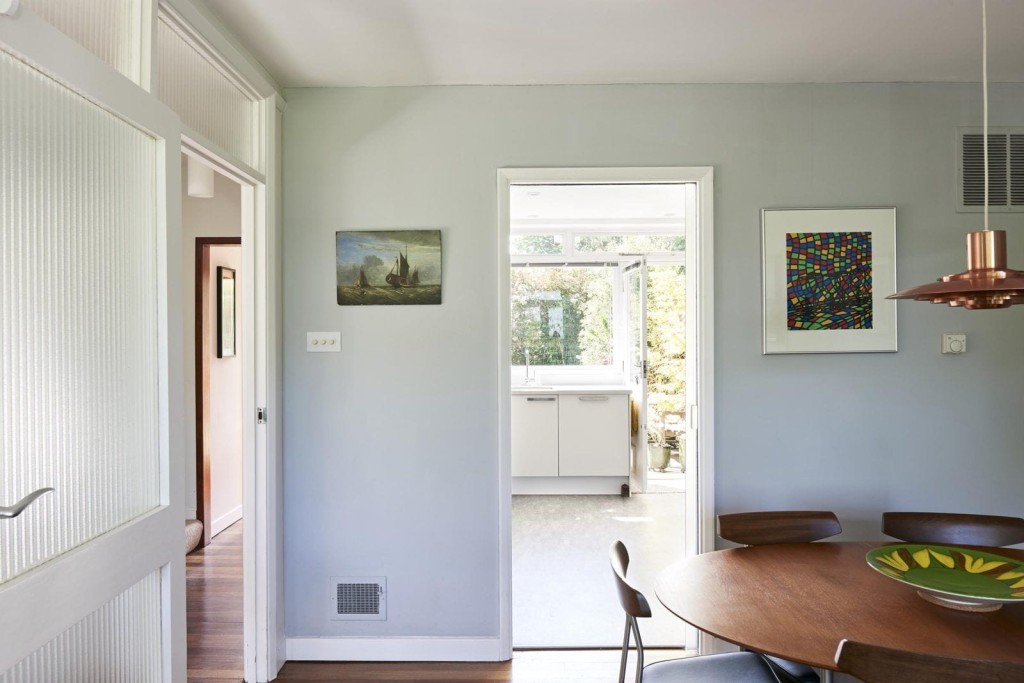
Yes, the uncluttered look was a crucial idea in modernism and a deliberate dramatic break with the past. And because of that, these houses and flats are perfect if you do want to create a home that looks like a super-cool art gallery.
But if you want to summon up the original vibe of these houses, don’t think you are restricted to blocks of whites, greys and blacks, you’re wrong. Patterns – sometimes abstract, but not always – were a key part of the midcentury look, especially in Britain. Used for curtains, cushion covers, wall hangings and even wallpaper, these can make rooms feel much more friendly than other varieties of modernism. The tone was set by the Festival of Britain in 1951 and the work of designers such as Lucienne Day.
And strong and bright colours are definitely an option, particularly as a contrast to crisp, freshly painted white walls. Classic reds, strong oranges and yellows, navy and pale blues, British racing green all work well in these settings.
If that sounds a bit loud for you, then a mixture of soft greys and mid-browns with muted mustard and maybe a sombre teal could be a good option. Remember, the ultimate goal is a home that you are happy and comfortable in.
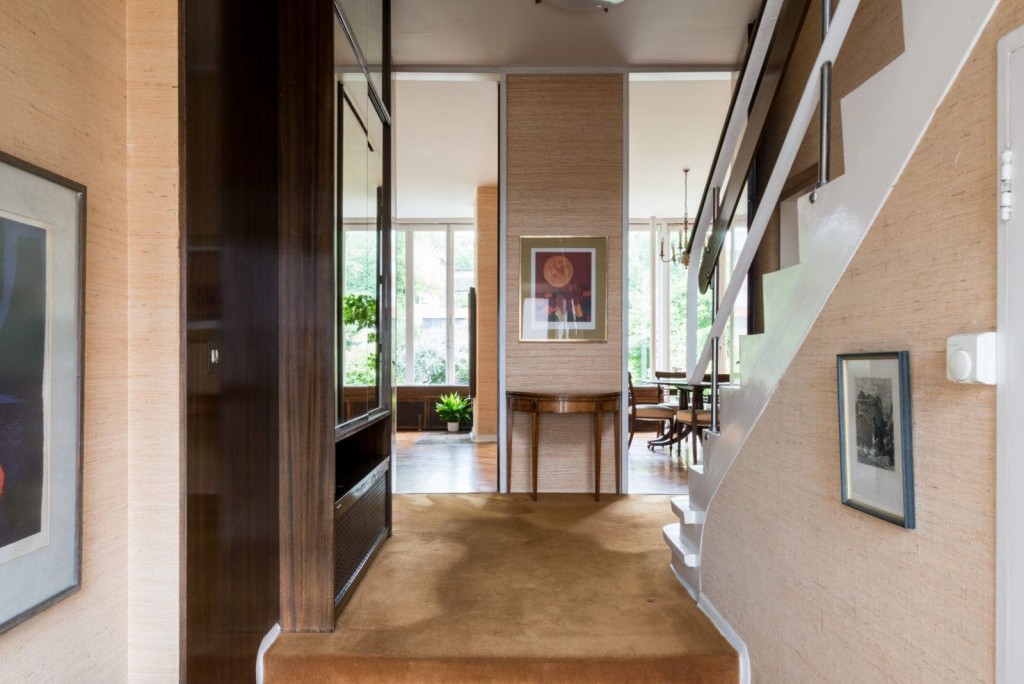
If we had been writing this 25 years ago, we would have suggested hitting charity shops and cheap local second-hand places. That’s because midcentury furniture (and other household items) was completely out of fashion and was purged from homes across the country. Unfortunately, things have changed and – certainly in London – you will pay serious prices for original 1950s and 1960s tables and sideboards.
However, if you are not a purist, the advantage of a style becoming more popular is that you can buy new versions of those trends. So you can buy a sideboard like this or this or this. Think, for instance, of the “Scandi” interiors vogue of a couple of years ago – if you choose items from that selectively and match them up with other finds and your own idiosyncratic choices, you can create a feel that evokes the spirit of 60 years ago without costing a fortune or blindly aping the past.
Of course, if you have the money to either buy great furniture from the time or have your own bespoke items made, all the better… As well as specialist furniture shops, there are big fairs bringing together stalls selling vintage midcentury pieces with people making new fabrics and fittings appropriate for this kind of home.
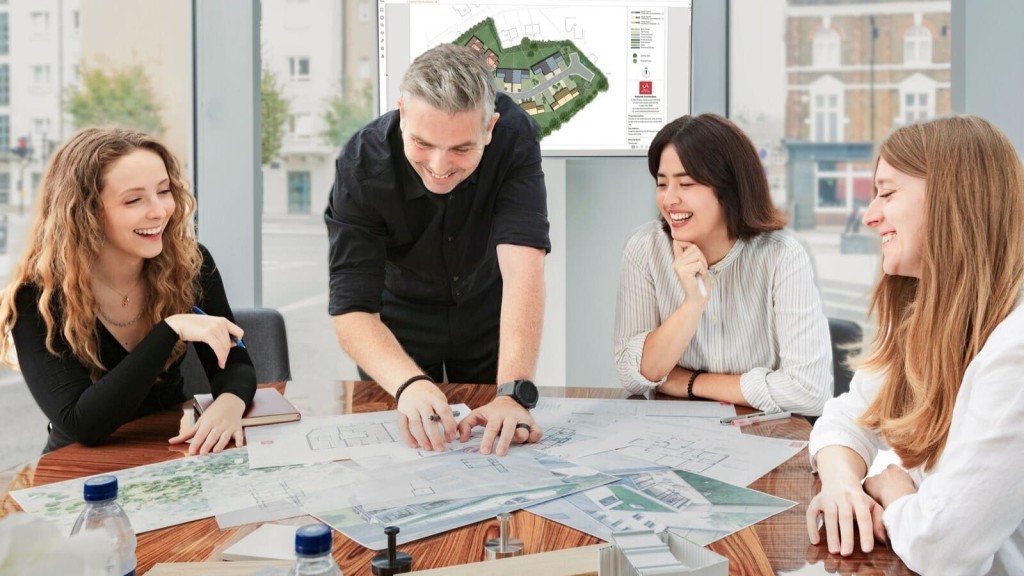
There’s a lot you can do on your own. But there are some parts of the project – anything involving structural changes – where you’ll probably need some professional advice. And, of course, if you know broadly what you are after but not how to make it work yourself, you might want to get some help with the interiors.
We’re very happy to design modern extensions and interiors, including – if your budget stretches to that – commissioning custom-made furniture and fittings. And we can deal with any paperwork you need, from permitted development and planning applications to getting building control approval.
And while we’re talking about paperwork, there’s something important we need to talk about. A lot of midcentury houses and flats were built on estates, both private and council/housing association. That means that as well as getting permission from your local authority for structural changes to your home, you might also need to get a licence to alter from the organisation that owns your estate or block of flats. Even if you’re a freeholder, you might need their OK for external changes to your house, and if you're a leaseholder, interior changes might need consent, too. We can guide you through all of that.
Urbanist Architecture is a London-based RIBA chartered architecture and planning practice with offices in Greenwich and Belgravia. With a dedicated focus in proven design and planning strategies, and expertise in residential extensions, conversions and new build homes, we help homeowners to create somewhere they enjoy living in and landowners and developers achieve ROI-focused results.
If you would like us to help you to restore the interior of your modernist home or design an appropriate extension, please don’t hesitate to get in touch.

Ella Macleod BA, MArch is a solution-focused architectural designer who brings a thoughtful balance of creativity and practicality to every project. Valued for both her natural design talent and her ability to foster authentic relationships, she is quickly establishing herself as a rising talent in the architecture industry.
We look forward to learning how we can help you. Simply fill in the form below and someone on our team will respond to you at the earliest opportunity.
The latest news, updates and expert views for ambitious, high-achieving and purpose-driven homeowners and property entrepreneurs.
The latest news, updates and expert views for ambitious, high-achieving and purpose-driven homeowners and property entrepreneurs.
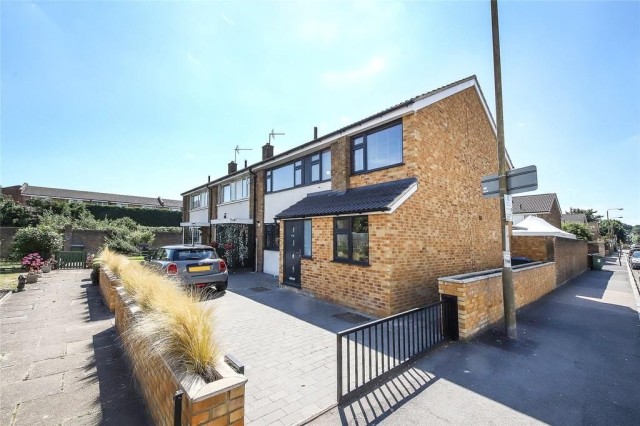
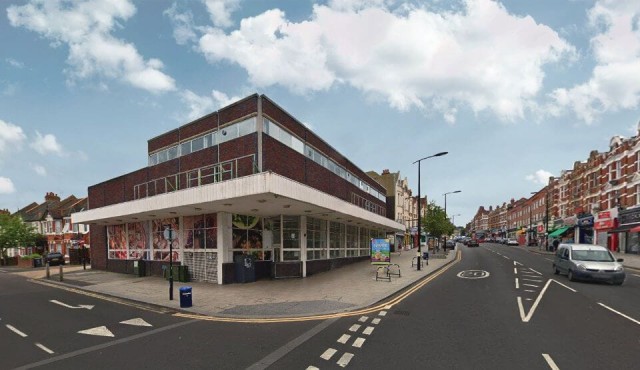
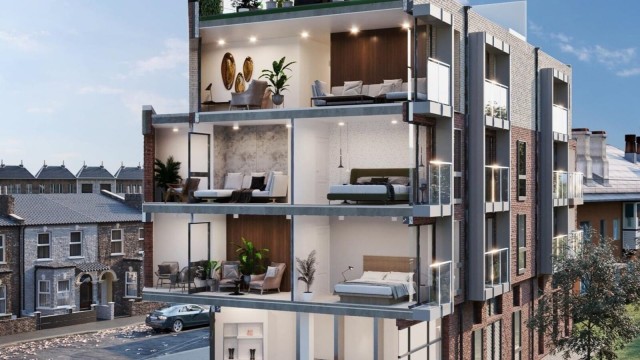

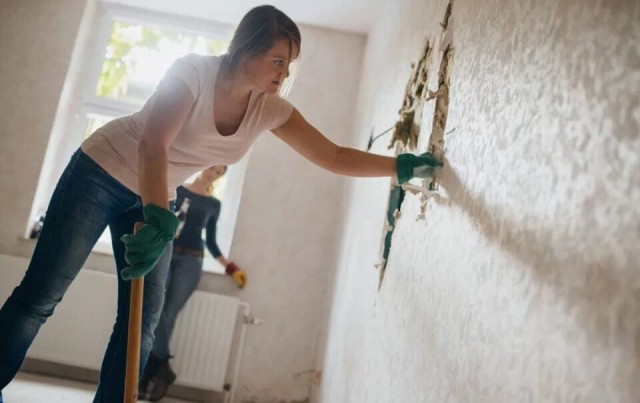
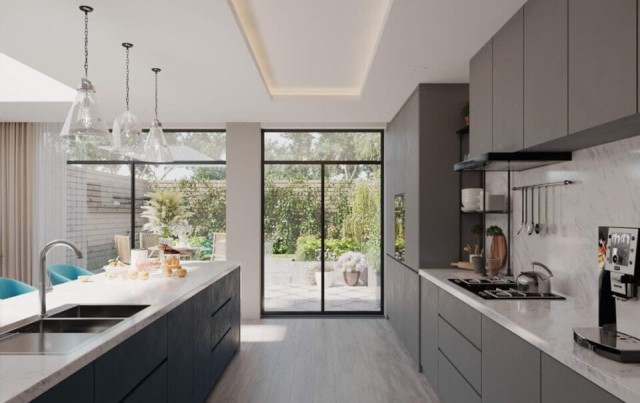
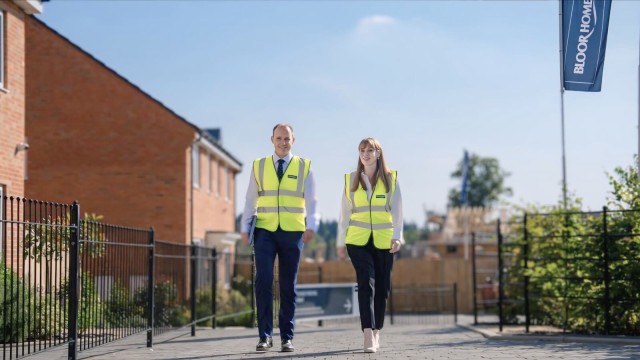
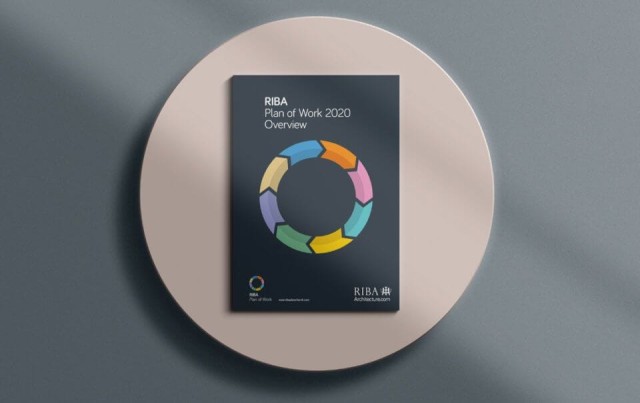
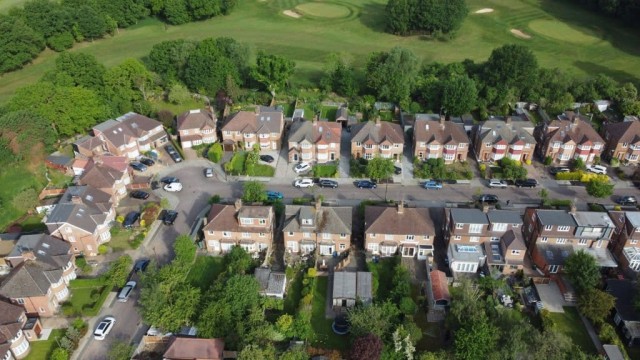
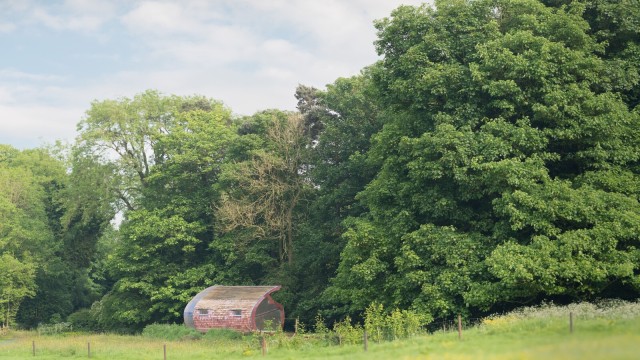
We specialise in crafting creative design and planning strategies to unlock the hidden potential of developments, secure planning permission and deliver imaginative projects on tricky sites
Write us a message